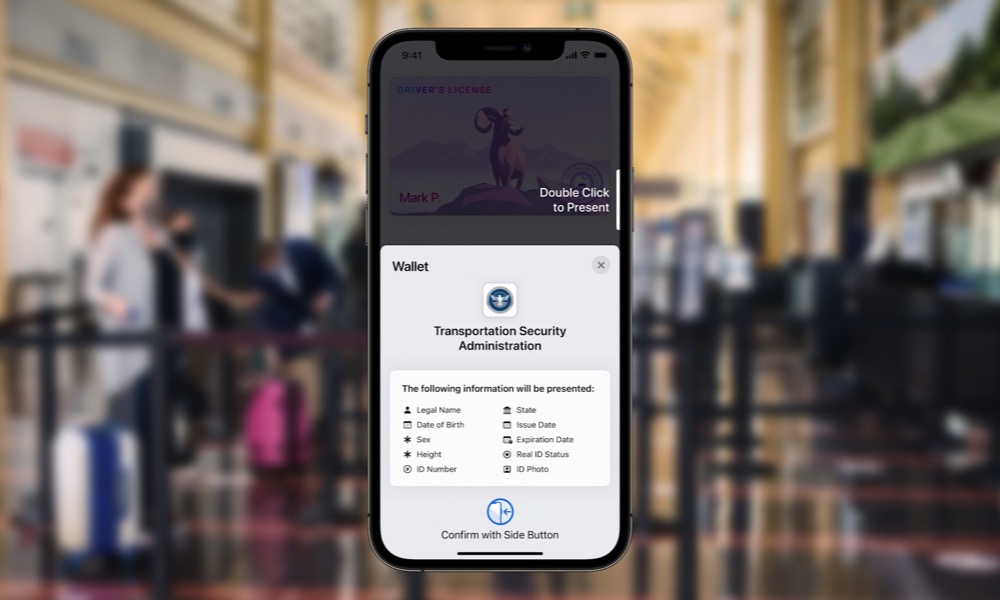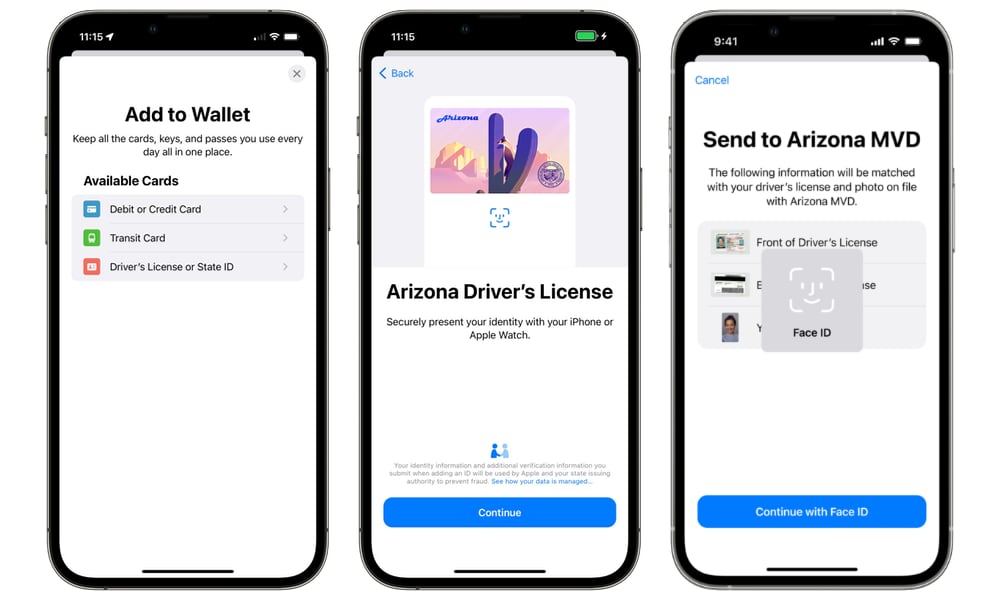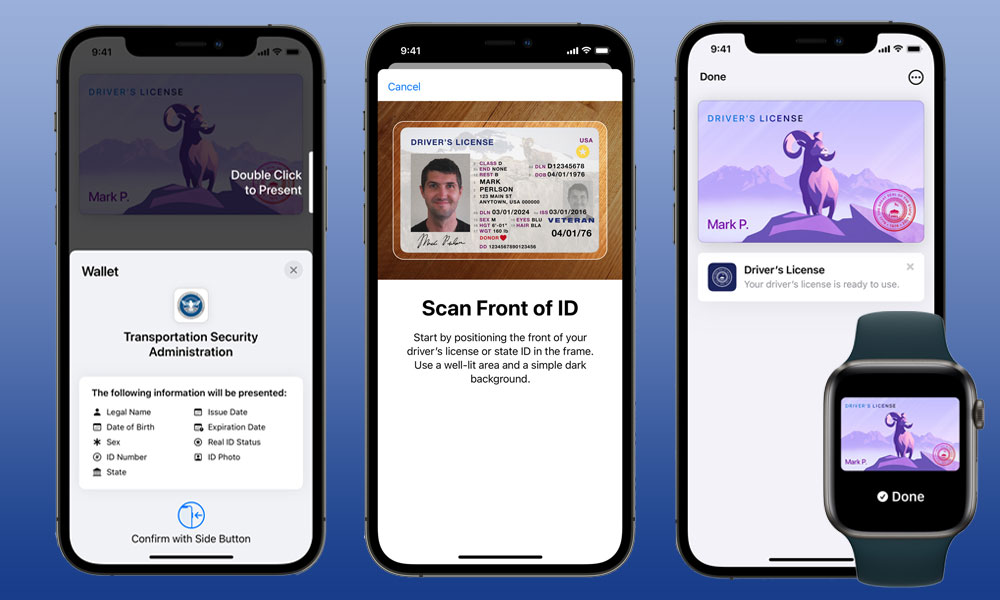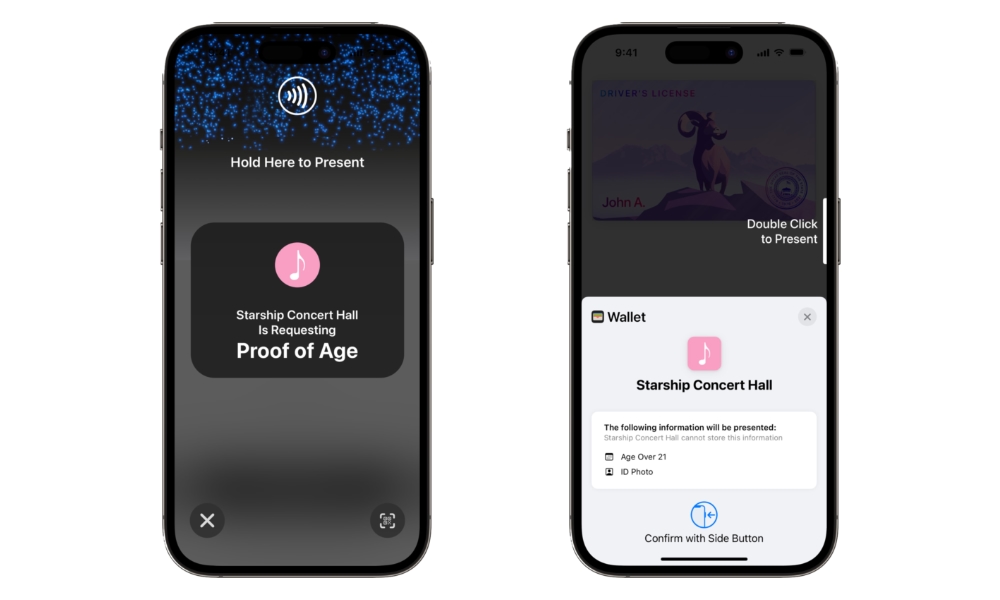iOS 17 Will Take Apple’s Digital IDs to the Next Level

Toggle Dark Mode
It’s been two years since Apple introduced support for Digital IDs on the iPhone. Sadly, as cool as the idea of keeping your driver’s license or state ID on your iPhone is, the feature hasn’t gained much traction in that time.
Most of the blame for this can be laid at the feet of state governments, as they’re the ones that need to get on board with issuing driver’s licenses and other IDs in an iPhone-friendly form. Even though eight U.S. states signed on to adopt the technology in late 2021, it’s only rolled out in half of those. Arizona became the first in early 2022, followed by Maryland last spring, and then Colorado and Georgia. The other four — Iowa, Kentucky, Oklahoma, and Utah — remain committed to adopting Digital IDs but haven’t provided a timeline on when that will happen. Numerous other states are exploring Digital IDs but haven’t announced any formal plans yet.
It also doesn’t help that Apple’s Digital IDs aren’t useful for much right now. Much like its strategy for the Apple Vision Pro headset, Apple rolled out Digital IDs in 2021, fully knowing it had a long road ahead of it before the world would be ready for mass adoption. As the old saying goes, however, the journey of a thousand miles has to begin with a single step.
So far, even residents of the four states that offer digital driver’s licenses and state IDs can only use them for one thing: Getting through TSA checkpoints at airports — and only four airports have checkpoints fully equipped with the necessary technology. The TSA is piloting around 20 others, but they’re not fully rolled out to the point where you can rely solely on your iPhone.
Such limitations mean there isn’t much demand for Digital IDs yet, which puts less pressure on politicians and government regulators to implement these systems. However, the good news is that Apple plans to expand the usefulness of Digital IDs in iOS 17 by empowering businesses to use them for customer verification.
According to an Apple newsroom announcement, starting this fall, businesses will be able to accept IDs presented from Apple Wallet using an iPhone as the scanning terminal, similar to how Tap to Pay on iPhone works.
Apple notes that “this will streamline their ability to securely check a customer’s age in person for things like alcohol purchases, or to verify a customer’s identity at checkout for car rentals, and more.”
Using Digital IDs for Verification
One of the best things about Apple’s Digital ID implementation is that you can present your personal information selectively, sharing only what’s necessary for the transaction.
The whole point of a digital identity card is that it can be verified electronically. While the Digital IDs in Apple Wallet have the physical appearance of a regular driver’s license or state ID card, that’s not what you’re using when you go through a TSA checkpoint. In fact, you don’t technically need to show the agent your screen at all.
Instead, you present your iPhone to an NFC terminal, similar to making a purchase using Apple Pay, and the Digital ID is read electronically, with secure signatures and encryption keys that prove it’s legitimate.
More significantly, though, your iPhone doesn’t automatically present everything stored in the Digital ID — you’re shown what information is being requested and given an opportunity to approve or decline sharing that info.
Of course, when it comes to the TSA, you don’t have much choice if you want to get through security and get onto your plane. However, the real benefit is for situations where a business only needs limited information about you. For example, if you’re buying alcohol, the store only needs to know that you’re over 21 years old and may need to see a photo to verify that you’re the person using the ID. They don’t even need to know your name, much less your address, phone number, blood type, organ donor status, or other information that might be written on a physical driver’s license.
Technically, businesses shouldn’t even need to see a photo since Apple has designed Digital IDs in such a way that they can’t be presented by anybody except the ID holder. For example, a passcode won’t do; you need to authenticate with Face ID when adding your Digital ID and use the same Face ID authentication when presenting it.
The same applies to Touch ID, and setting up additional facial or fingerprint profiles won’t work. Still, it’s understandable that many folks asking for Digital IDs won’t understand this aspect of things, so sharing a photo from a driver’s license or state ID will help reassure them that the person is presenting their own ID and not borrowing someone else’s.
Once businesses are able to begin accepting Digital IDs in iOS 17, the process will be similar to how the TSA terminals work now. As Apple explains, users will “simply hold their iPhone or Apple Watch near the business’s iPhone” and “will be shown what information is being requested and whether the receiving party will be storing the information. Users will then be asked to authenticate and consent by using Face ID or Touch ID.”
While it remains to be seen how many businesses will adopt this technology, it’s to their advantage to do so. While presenting a physical ID may be faster than pulling out your iPhone, that’s only because most stores don’t bother to do much more than glance at it. It’s not that difficult to create a physical driver’s license that will pass a casual inspection by a cashier. On the other hand, a Digital ID in Apple Wallet can’t be forged, which means businesses will have a much higher degree of confidence in the legitimacy of their customers.










